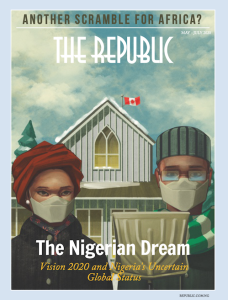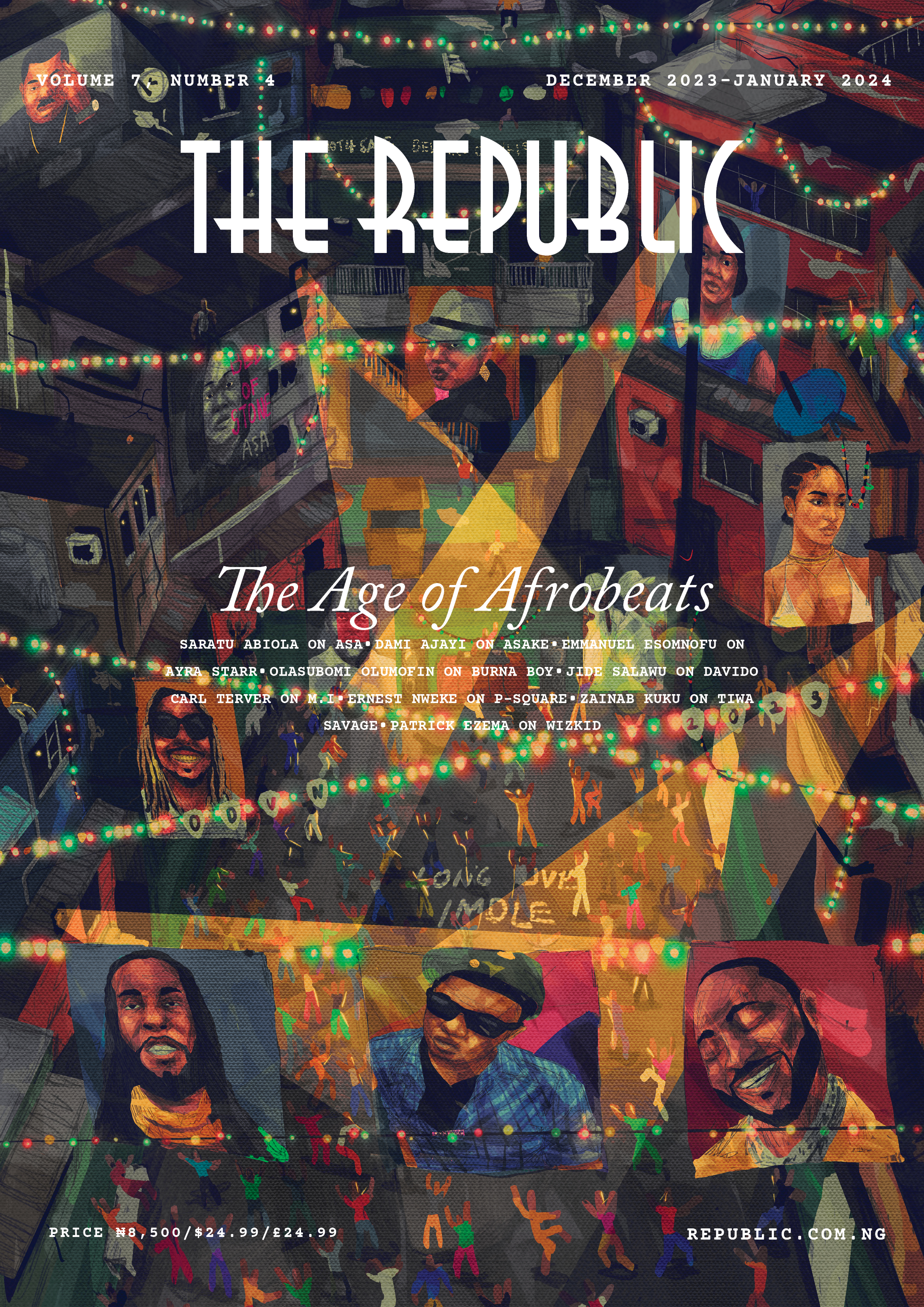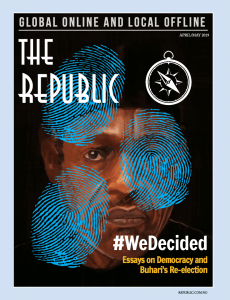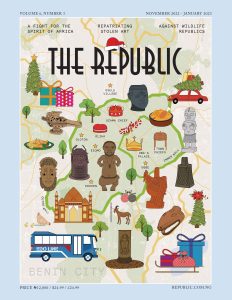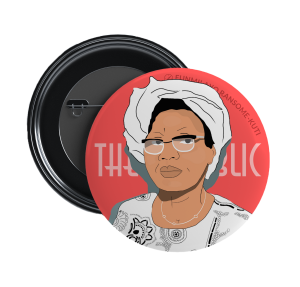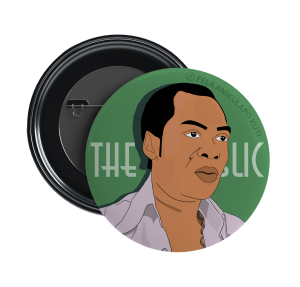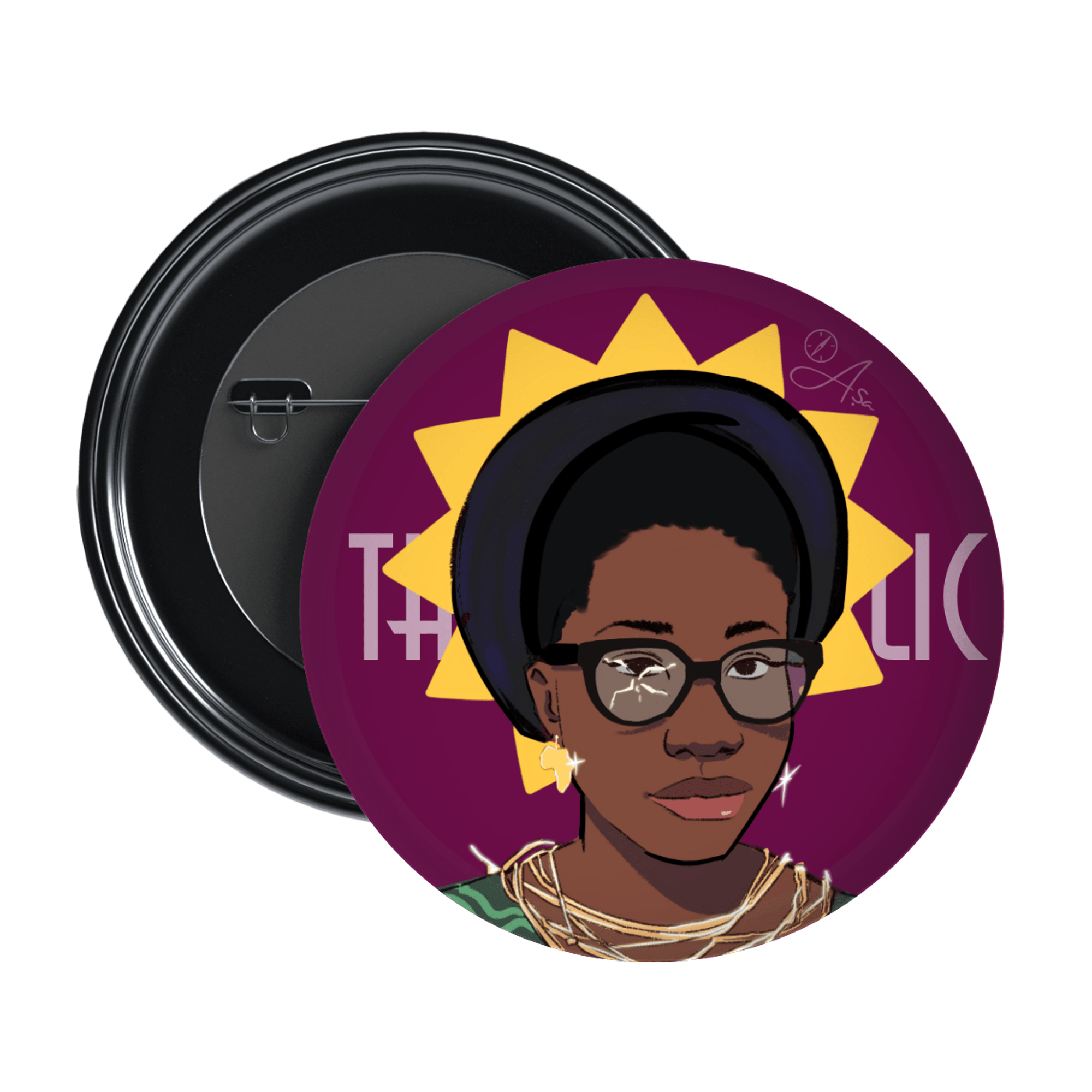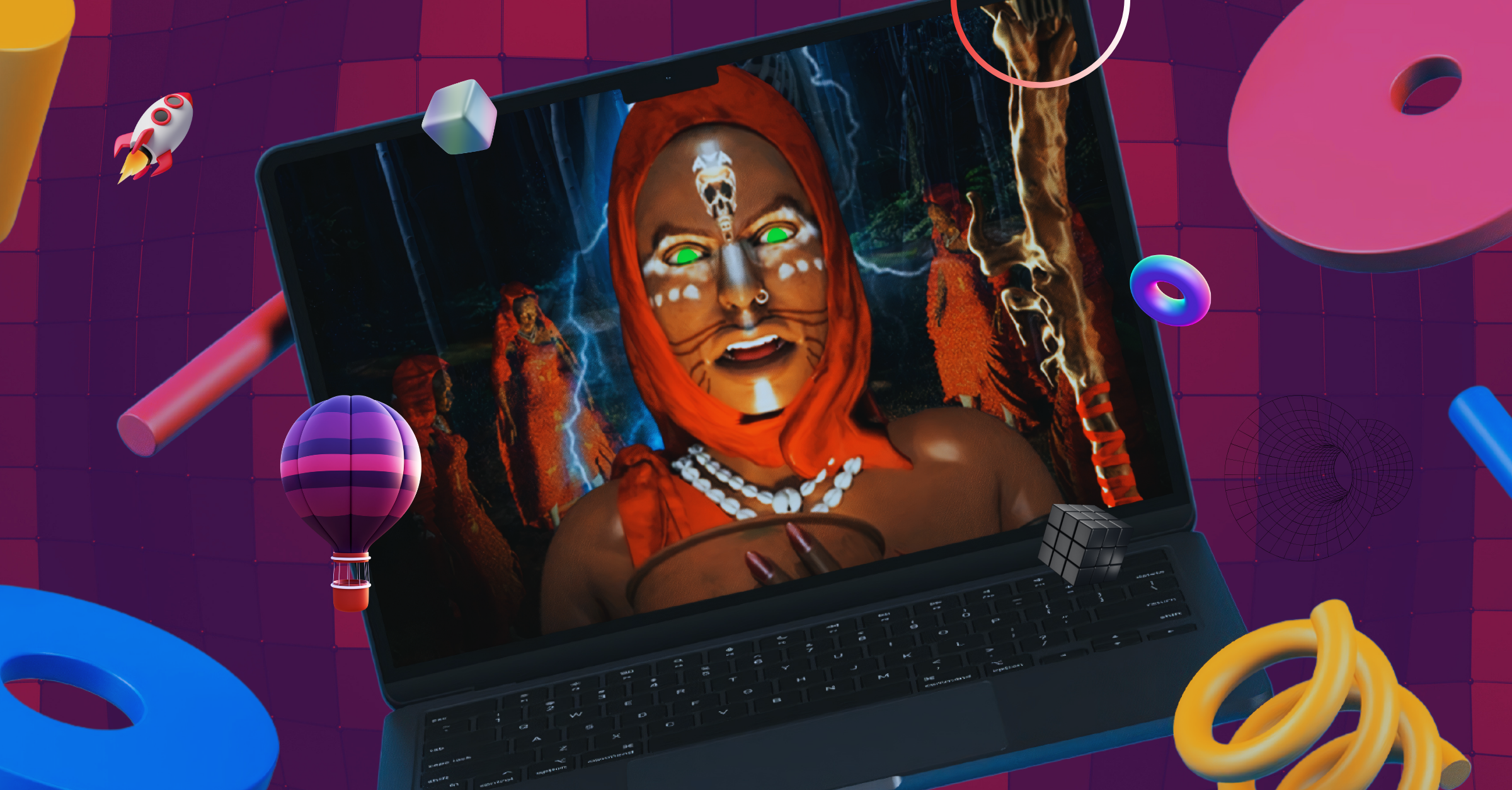
Oya: The Goddess of Gods poster. 3D NATION1 / IG. Photo illustration by Dami Mojid for THE REPUBLIC.
the ministry of arts / film dept.
A Legendary Tale Lost in Animation

Oya: The Goddess of Gods poster. 3D NATION1 / IG. Photo illustration by Dami Mojid for THE REPUBLIC.
the ministry of arts / film dept.
A Legendary Tale Lost in Animation
Oral narratives often exist in stories of legends whose significant personages transcended them into timeless protagonists. Distinct from myths, which are fabricated stories manufactured by different communities (often to explain their origin as well as the stories of divinities), legends are prominent, valuable and enduring historical narratives. From an anthropological lens, legends are old-age stories about heroic individuals who are later deified, with their life stories codified and revered as sacred by certain believers who value their ideals and values. This communalistic belonging varies across communities. Among the Yoruba people, legends revolve around various deities such as Sango, Ogun, Agemo, Osun, and Oya.
The story of Oya is the subject of the 15-minute animated film, Oya: The Goddess of God. The film was released in May 2024 by 3D Nation Multimedia. Titled in the eponymous character of the legend, the film attempts to revive the legend of this revered feminine deity, who has maintained her influence across generations and geographical boundaries among Yoruba-speaking communities. Oya’s influence transcends both generational and geographical boundaries, extending beyond the traditional territories of the ancient Yorubas. Originating from the Yoruba people of Nigeria, her worship has spread to parts of West Africa, Brazil, and the Caribbean, where she is known as Iansa and Oia in some diasporic communities. Oya’s impact is evident in syncretic practices like Santeria, Candomblé, and Vodou, where she is associated with figures like Saint Barbara, showcasing the adaptability of Yoruba spirituality in diverse cultural contexts. Therefore, to do justice to this legendary figure, a film is expected to adopt a synchronic approach, providing a contemporary exploration of her influence among diverse believers.
However, Lawrence Dieyi’s animated short film takes an anthropological and rural approach, falling short in its attempt to reimagine Oya’s legend for a modern audience.
By using 3D animation, Dieyi’s short epic film had the potential to retell the story of Oya to a new and younger audience who may be unfamiliar with her heroism and cultural significance. As the powerful orisha and ruler of winds, storms, and transformative change, Oya is a crucial part of Yoruba spirituality. However, this short film struggled in the critical exercise to tell a story—Oya’s story. The plot was disjointed and lacked clear direction, failing to convey the pivotal moments in Oya’s life, including her tragic flaw and her iconic battle with Sango, her second husband and king. Despite its attempts to capture the essence of Oya’s character, symbolizing both the destructive and regenerative aspects of her nature, the film’s execution was hindered by unrealistic and disconnected character actions, failing to do justice to the rich story adapted from the ancient Oyo kingdom.
A SHORT PLAY WITH A TERRIBLY DISJOINTED PLOT
The animated film starts from the birth of Oya, which is paradoxically presented as a prologue, on the same night she is sacrificed to the moon. The film reveals that Oya, born a human girl, was offered to the deities, and named Oya, Ayaba: Oya-Iyansan. She is gifted the power to manipulate nature’s elements, and is destined to embody female strength, a fire goddess who brings rapid change and transformation. As a force of nature associated with wind, lightning, and tornadoes, Oya’s influence is meant to transcend time and existence. However, the animated film fails to provide a comprehensive narrative of Oya’s birth and childhood, leaving gaps in the story and neglecting to showcase how her early life events shaped her legendary character.
The narration of this 15-minute epic film is disjointed, jumping abruptly from Oya’s birth to events 31 years later, where the fictional Lalupon Kingdom is beset by a calamity and strange occurrences. The scenes lack a sequential plot, with the story fragmented and difficult to follow. For example, the film abruptly shifts from Sango’s declaration of a four-day preparation for the Egungun festival—a tradition honouring the renowned Obilibili masquerade—to Oya (in her spirit form) performing a ritual to awaken the dead Ajala, without clear connection or context. The reason behind Oya’s actions, including the exhumation of Ajala’s body, is left unexplained, leaving the audience to fill in the gaps. These omissions make it challenging to understand the story, as the film fails to provide clear connections between scenes and plot points.
The film’s disjointed narrative suggests either a faulty editing and post-production process or a poorly scripted plot. The projection of events lacks coherence, leading to confusing scene transitions. For instance, the king’s reaction to Ajala’s exhumation is interrupted by a sudden unrelated scene featuring minor characters engaged in local activities. The scene then abruptly returns to the king’s conversation with Arinurode, the town’s priest, without any logical connection. This incongruity is jarring and disrupts the viewer’s engagement with the story.
This animated film is plagued by significant plot issues, lacking a well-structured narrative with logically sequential events. The conflict is poorly projected, potentially perpetuating harmful cultural stereotypes. Oya’s exhumation of Ajala’s body leads to widespread destruction and fear, yet the story fails to employ dramatic techniques like flashbacks or foreshadowing to explain the reasoning behind Oya’s actions. This omission risks portraying African legends as destructive deities, reinforcing negative tropes. The film ends abruptly with Oya receiving a concoction from Ajala to prepare for an impending war, setting up a potential sequel.
shop the republic
-
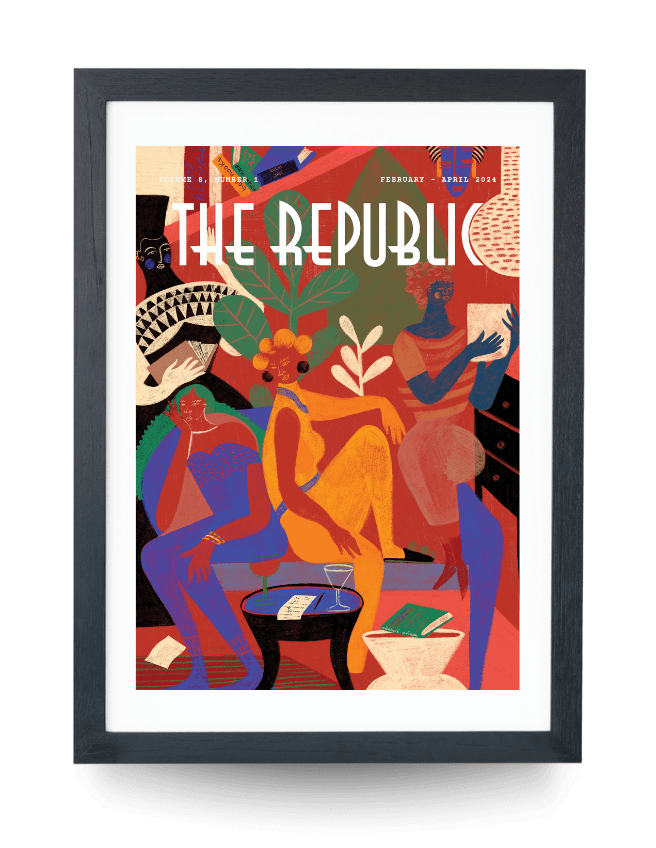 ₦70,000.00 – ₦75,000.00Select options This product has multiple variants. The options may be chosen on the product page
₦70,000.00 – ₦75,000.00Select options This product has multiple variants. The options may be chosen on the product page -
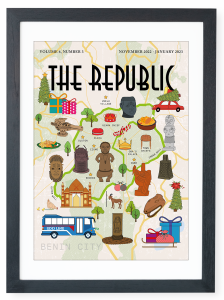 ₦70,000.00 – ₦75,000.00Select options This product has multiple variants. The options may be chosen on the product page
₦70,000.00 – ₦75,000.00Select options This product has multiple variants. The options may be chosen on the product page -
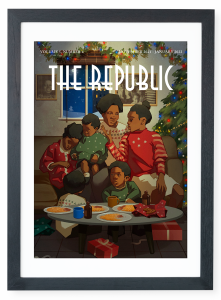 ₦70,000.00 – ₦75,000.00Select options This product has multiple variants. The options may be chosen on the product page
₦70,000.00 – ₦75,000.00Select options This product has multiple variants. The options may be chosen on the product page -
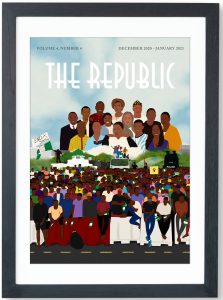 ₦70,000.00 – ₦75,000.00Select options This product has multiple variants. The options may be chosen on the product page
₦70,000.00 – ₦75,000.00Select options This product has multiple variants. The options may be chosen on the product page
shop the republic
-
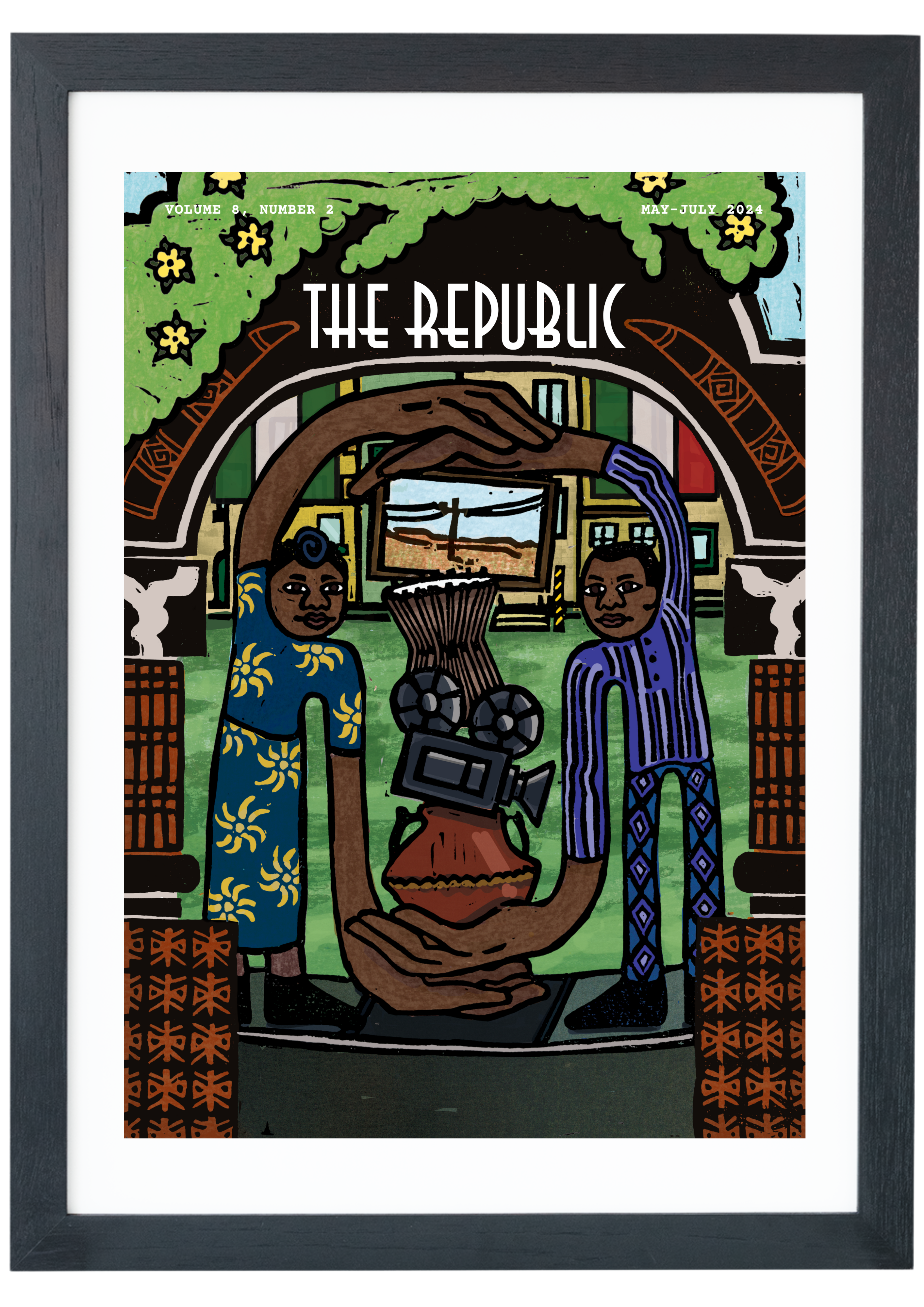 ₦140,000.00 – ₦150,000.00Select options This product has multiple variants. The options may be chosen on the product page
₦140,000.00 – ₦150,000.00Select options This product has multiple variants. The options may be chosen on the product page
THE SUCCESSES OF ÁFÀMÉFÙNÀ
In a way that cancels most odds, Áfàméfùnà excels in its writing and the level of research that went into it. The storytelling is well-rounded and brilliantly crafted. With the help of the memories of the titular character and his wife, this movie employs a reverse chronological order in its storytelling. The plot unfolds in a way that the richness and suspense of the movie are held together to the very end. The conversations flow realistically from scene to scene in a way that makes imagining real people having similar conversations easy.
There are numerous pieces of excellence that merge to bring Áfàméfùnà as close to perfection as cinematically possible. The everydayness of the extras—which is the point of having extras in a play or a movie—is one such instance. The success of the wardrobe and costume department in adorning the cast in believable garbs and looks is commendable. The ability of the hands behind the camera to capture aerial views of the market added an almost gustatory familiarity to the market scene. The intentional details that went into setting the scenes are also noteworthy. When we first see the home scenes, the camera catches a carefully placed 2002 calendar bearing an image of Odogwu’s picture, something that can be expected from a successful Igbo businessman of that time. Later in the movie, we see Odogwu’s sitting room again. This time, family pictures of Odogwu with his wife and daughter sit side by side with images of Jesus and Mary, all typical features of any Catholic Igbo family. These details come together to crown the efforts of the writers with a level of believability. In all, the general editing that ties these well-executed elements together contributes to making this a rich watch.
shop the republic
-
 ₦10,000.00 – ₦30,000.00Select options This product has multiple variants. The options may be chosen on the product page
₦10,000.00 – ₦30,000.00Select options This product has multiple variants. The options may be chosen on the product page
THE BOUNDARY BETWEEN TRADITION AND MODERNITY
In Oya: The Goddess of Gods, tradition meets modernity, pushing the boundaries between the two. Retelling an ancient narrative through 3D animation, the film attempts to give nuance to traditional storytelling, albeit with limited success. As an epic film dramatizing Oya’s heroics, it projects significant cultural undertones, struggling to effectively convey the legend’s story to a new audience. However, it excels in bridging the gap between tradition and modernity, innovatively retelling an ancient tale in a fresh, modern form. Despite its shortcomings, Lawrence Dieyi’s Oya successfully pioneers a new approach to storytelling, merging traditional legend with modern animation techniques.
Despite its narrative flaws, the animated movie showcases an ancient story and captures the simplicity of Yoruba existence in a new form. While it may not offer an avant-garde penetration or a groundbreaking exploration of culture, it successfully presents the mundane aspects of Yoruba life and traditions. Along the prism of geographical, ethereal, and cultural boundaries, language, moral regulations, as well as material culture, the animated film depicts life as it is for the Yoruba in precolonial times, albeit in a mild and subtle manner.
The Yoruba philosophy posits that the physical and the supernatural worlds operate in harmony, and the film masterfully explores this concept by depicting that only selected individuals can traverse both realms. The narrative highlights how events in the supernatural world impact the physical, emphasizing the importance of balance and the need for appeasements and sacrifices. Through the fictional narrator Adelabu, the film also delves into the mysteries of life, which were central to the collective psyche of ancient Yoruba civilization. These mysteries lie beyond human comprehension, accessible only to chosen individuals who possess divine abilities granted by the gods.
Dieyi’s epic short film is linguistically rich and beautiful, highlighting the Yoruba language in all its glory. While the film’s use of Yoruba may present a challenge for younger viewers to fully comprehend, the inclusion of English translations for the characters’ dialogues mitigates this potential barrier, making the film more accessible to a wider audience. The film also displays the moral fabric of the Yoruba people, while depicting characters engaged in various occupations like hairdressing and selling as well as recreational activities. The narrative highlights important moral aspects, such as rites of passage, traditional greetings, and exchanging pleasantries about family members. The film successfully explores the unique cultural practices and values that are peculiar to the Yoruba, providing a nuanced portrayal of their way of life.
shop the republic
A SONG YET TO SING IN UNISON
Oya: The Goddess of Gods deserves praise for its impressive exploration of material culture in 3D. The film meticulously captures the intricacies of Yoruba culture, including dressing, appearance, food, communal values, proverbs, sarcasm, humour, and wit. These communal belongings are accurately portrayed to reflect the order and belief system in Yoruba society, contrary to colonialist depictions that often misrepresent Black cultures as barbaric and heathen. The film also masterfully incorporates songs that perfectly complement the actions of characters, making the oral narrative even more enchanting. However, these cultural indices are not sufficient to make it a wholesome narrative.
While Dieyi’s Oya attempts to revitalize an ancient tale with a modern spin, making it enjoyable, the narrative falls short with a confusing and vague plot. Cinematically rich but poorly plot-driven, the film prioritizes obscure density over substance, failing to deliver the satisfying tragic experience often aligned with Aristotelian principles. The tragic hero, Oya, is underdeveloped and misplaced within the story, contradicting her robust character in Yoruba mythology. Unlike the legendary Oya, a fierce and regal figure who wears a flowing skirt symbolizing the wind’s dynamic movement, Dieyi’s Oya is reduced to a one-dimensional feminine figure in a tight red dress. While the film does not neglect Oya’s roles as guardian of the cemetery and the dead, her ability to communicate with spirits, and her dominion over the dead—which explained her power to raise Ajala—it failed to communicate her essence within the narration. Additionally, Oya’s status as a goddess—her fierce warrior spirit and capacity for both destruction and renewal—are all inadequately treated as she appears a villainous doppelganger in her own legendary story. As such, the film struggles to do justice to the rich legacy of Oya in Yoruba mythology⎈
shop the republic
BUY THE MAGAZINE AND/OR THE COVER
-
 ₦140,000.00 – ₦150,000.00Select options This product has multiple variants. The options may be chosen on the product page
₦140,000.00 – ₦150,000.00Select options This product has multiple variants. The options may be chosen on the product page -
 ₦10,000.00 – ₦30,000.00Select options This product has multiple variants. The options may be chosen on the product page
₦10,000.00 – ₦30,000.00Select options This product has multiple variants. The options may be chosen on the product page




